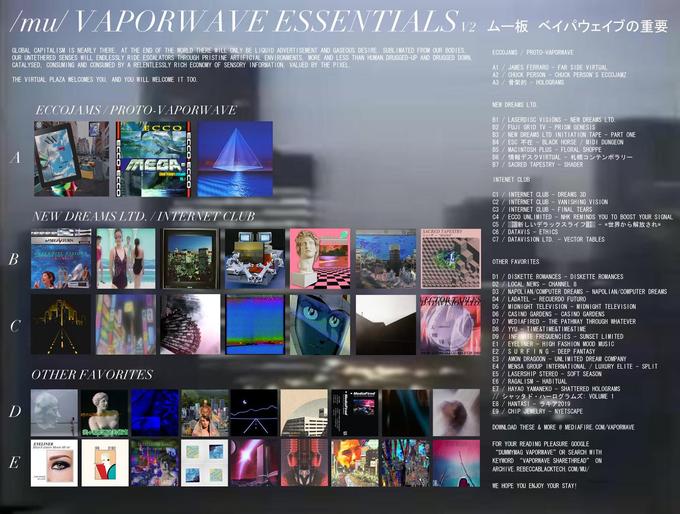Meme insider
The Zoomers Begin to Feel Old: TikTok Aesthetics And Childhood Nostalgia Unite In Latest Meme Trend
Before social media exploded across the internet, a trend began that would eventually culminate in the early 2010s and become defined by a singular term. The trend was vaporwave and the term was aesthetic. The idea of vaporwave is an '80s- and '90s-styled aesthetic of corporate success. Utilizing images of early tech companies merged with Japanese elements and neon lights, it would create a movement of lo-fi rhythms and look to the consumerist culture at the tail end of the millennium.
From this subculture would emerge the term "aesthetic" to define the various images that identify something as vaporwave. Now, almost a decade later, one of the youngest social media apps, TikTok, has adopted the term more broadly, yet with a connecting thread that ties it back to the vaporwave movement, known as Rare Aesthetic Posting.

Aesthetic has many definitions, and it's important to dissect them to get at this new trend on TikTok. Originally in art philosophy, "aesthetic" is considered the study of beauty and taste, although the term is older than the 18th-century artists and 19th-century philosophers it's attributed to. The term has its roots in Ancient Greece, and it was discovered that men like Plato and Aristotle had discussions about it beyond its use in the arts.

Online, however, it typically refers to the themes associated with vaporwave. Visuals that suggest nostalgia from the '80s as well as the 1990s are commonly juxtaposed with Greek busts and marble pillars, harkening back to its origins. The defining song that established these themes was "リサフランク420 / 現代のコンピュー" by Macintosh Plus, released in 2012. As the genre grew on 4chan and the themes spread across Tumblr, it began to create a full subculture of its own with elements from each of these combined into one.

Partially due to the change in culture after the millennium and 9/11, the group largely responsible for spreading the subculture began to feel nostalgic for times that their aesthetic reached back to. Millennials drove this trend with their constant online presence. So as the '90s kids grew up, it became a way for them to recreate a time they barely lived in, but longed for nonetheless. This concept of recreating nostalgia in a new form is what would end up defining vaporwave and its aesthetic. Falsely picking and choosing an older culture to retrofit an idea of what it was like.
The TikTok trend, Rare Aesthetic Posting, does a similar thing, although the trend's starter didn't necessarily aim to do that. In mid-February this year, user @rissaduh put up a video detailing four aesthetics alongside the hashtags "#aesthetic" and "#rareaesthetic." The video went over Retro Futurism, Dark Academia and Mon Kei, as well as Witch House.
Retro Futurism invoked the pulp fiction magazine of the '50s, which can also be seen in the Fallout video game series. Dark Academia included the concept that takes notes from English boarding schools and New England Ivy League campuses during winter and fall. Mon Kei seems to be an aesthetic of pastels juxtaposed with darker colors, as well as taking notes from the Japanese musician movement of Visual Kei. The final aesthetic, Witch House, is both a music genre that came about around the same time as vaporwave but also a dark reflection of the Cottagecore aesthetic.
https://www.tiktok.com/embed/v2/6794974907521355014?_d=
The video @rissduh created seems to have kicked off the trend, and she used the Crystal Castles song "Crimewave" for a backtrack. Then, as the year went on, the trend reemerged at the end of September with aesthetics like “growing up as X” as well as the beginning of a Y2K aesthetic driven by nostalgia. This nostalgia seems to follow the vaporwave trend, except for Zoomers being the primary users on the app driving this new offshoot. The nostalgia of childhood, as well as growing up in a different era, is what Millenials went through with vaporwave, and now Zoomers are going through a similar phenomenon with post-Y2K.
https://www.tiktok.com/embed/v2/6877328320178965766
Additionally, this week the trend began to reemerge with lighter videos such as “early morning school field trip” by @flyertunke or “driving to the airport at 5 AM” by @eduardosilvawf. However, the nostalgia in them is evident: the backseat of a car or bus driving through the fog, with the POV cloudy and muddled. These are images that project childhood memories, and Zoomers have been responding positively to the nostalgia they invoke.
https://www.tiktok.com/embed/v2/6887396034482408710
If the trend works in reverse, it's possible a music genre may be born from the developing Y2K nostalgia — something that is likely to be dark and poppy, yet slightly off in the same way vaporwave is '80s new wave but twisted and distorted. It’s something to think about as Zoomers get older and the next generation begins to feel nostalgia for the 2010s.
Meme Insider is a Know Your Meme publication and the world's leading internet culture magazine. Find out how to get your first print copy for free, and check out the Meme Insider website for more info.

Comments ( 0 )
Sorry, but you must activate your account to post a comment.